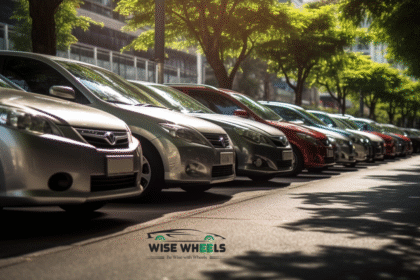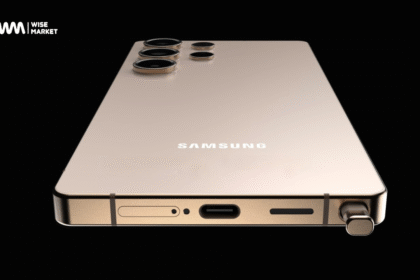A well-kept lawn is one of the most attractive features of any home. It creates a clean and welcoming look, but without proper edging, even the healthiest grass can appear messy and unorganized. Lawn edging not only improves the appearance of your yard but also helps separate different areas like flowerbeds, pathways, and driveways. Choosing the right material for edging can make all the difference between a lawn that looks ordinary and one that looks sharp and well-maintained.
There are many materials available for lawn edging, and each one has its own pros and cons. Some are more affordable, while others are longer-lasting. The best choice often depends on your budget, the style of your yard, and how much maintenance you are willing to do. Understanding the options will help you choose the most effective and attractive edging for your lawn.
Stone Edging
Stone is one of the most durable and classic materials for lawn edging. It gives a timeless, natural appearance and blends beautifully with outdoor landscapes. Stones can be cut, shaped, or placed in their natural form, depending on the look you want.
Pros:
- Extremely durable and weather-resistant.
- Adds a natural, elegant look to your yard.
- Works well for both modern and traditional garden styles.
Cons:
- Can be expensive compared to other options.
- Requires heavy lifting and skilled installation.
Brick Edging
Brick is another popular choice for edging because of its neat and organized appearance. It creates a defined border that helps keep grass from spreading into flowerbeds.
Pros:
- Strong and long-lasting.
- Available in various colors and designs.
- Provides a polished and tidy finish.
Cons:
- Can shift over time if not properly installed.
- Requires more effort to set up compared to plastic or metal.
Metal Edging
For homeowners who prefer a sleek and modern look, metal edging is an excellent choice. Made of steel or aluminum, it creates a sharp and clean division between grass and garden beds.
Pros:
- Very durable and long-lasting.
- Slim design that doesn’t distract from landscaping.
- Ideal for modern gardens.
Cons:
- Can rust if not coated properly.
- More costly than plastic options.
Plastic or Rubber Edging
Plastic and recycled rubber edging are budget-friendly and easy to install. These materials are lightweight, flexible, and suitable for curved or irregularly shaped lawns.
Pros:
- Affordable and widely available.
- Easy to install without professional help.
- Flexible for creative designs.
Cons:
- Not as durable as stone, brick, or metal.
- Can fade or crack over time.
Wood Edging
Wood edging is often used for rustic or cottage-style gardens. It provides a warm, natural look and works well around vegetable patches or flower beds.
Pros:
- Affordable and easy to work with.
- Blends well with natural landscapes.
- Can be customized with paint or stain.
Cons:
- Susceptible to rot, insects, and weather damage.
- Shorter lifespan compared to stone or metal.
At this point, it’s clear that every material has its strengths and weaknesses. While some homeowners love the rustic feel of wood or stone, others prefer the neat precision of brick or metal. Choosing the best material often depends on your landscape style, budget, and how much time you want to spend on maintenance.
That’s why many people look toward professionals like Platinum Lawn Care, who are known for offering top-quality lawn care solutions that last. Their experience ensures that edging materials are installed correctly, preventing future issues like shifting or damage. Many local homeowners trust them because they combine expert knowledge with attention to detail, giving lawns a fresh and professional finish.
Other Factors to Consider When Choosing Lawn Edging
Besides material, here are a few important things to think about:
- Budget: Some materials, like stone or metal, cost more but last longer, while plastic and wood are cheaper but may need replacing sooner.
- Maintenance: Stone and brick require little upkeep, while wood may need frequent replacement.
- Aesthetic: Choose a material that matches the style of your home and garden.
- Climate: Consider how weather in your area affects durability. For example, metal might rust in wet climates, while wood may not last in areas with heavy rainfall.
Why Professional Edging Helps
Even the best materials can fail if they aren’t installed properly. Uneven lines, shifting bricks, or poor drainage can make your yard look messy. Professional lawn care services not only help select the right materials but also ensure that edging is straight, secure, and built to last. This small investment can make your lawn look polished and save you time in the long run.
For example, many homeowners choose local experts who provide Lawn Edging Services in Duluth, MN because they know the local climate and soil conditions, which ensures a better finish and longer-lasting results.
Conclusion
Lawn edging is more than just a finishing touch—it’s an essential part of keeping your yard looking sharp, organized, and healthy. From stone and brick to metal, plastic, and wood, there’s no one-size-fits-all answer to the best material. The right choice depends on your budget, style, and maintenance preferences.
If you’re unsure which option suits your yard, seeking professional guidance is always a wise step. A properly edged lawn not only boosts your home’s curb appeal but also makes garden maintenance easier and more efficient. Whether you’re drawn to the timeless beauty of stone or the simplicity of plastic, the key is to balance durability with design. With the right approach, your lawn can look neat and inviting for years to come.



